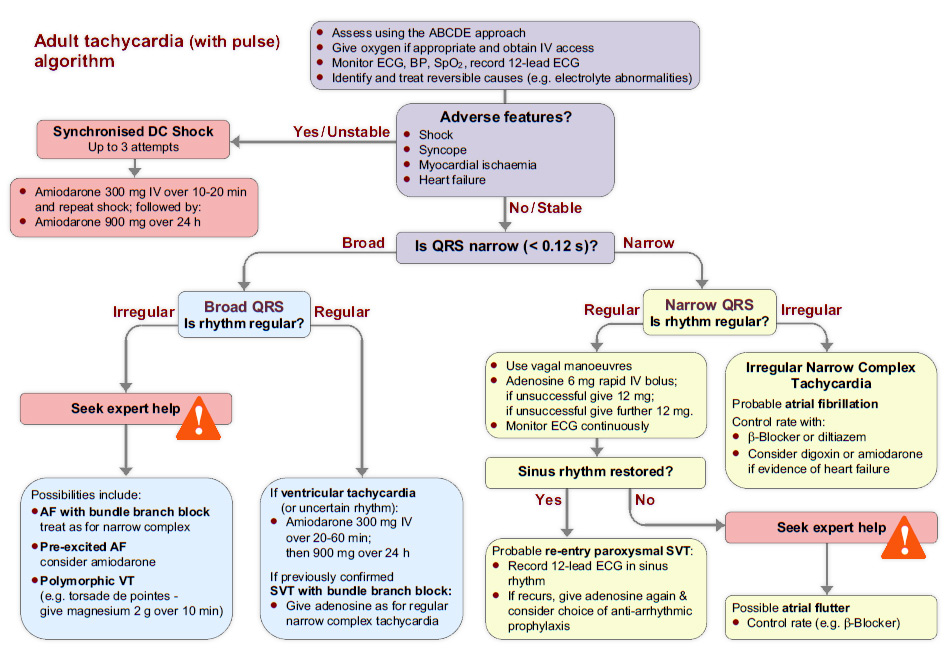
- Managing the patient with adverse signs
Please refer to the topic ‘How to perform synchronised cardioversion’.

In the absence of contraindications, start anticoagulation initially with low-molecular-weight heparin or unfractionated heparin, at the earliest opportunity. You should ensure that you do not allow this treatment to delay cardioversion.
Select Next to continue.References
See chapter 11 of the ALS manual for further reading about the tachycardia algorithm.
Essentials: Adverse features
Adverse features imply that a patient’s condition is unstable and at risk of deterioration. The following adverse features indicate that a patient is at risk of deterioration either wholly or partly because of their arrhythmia:
- Shock
- Syncope
- Heart failure
- Myocardial ischaemia
More information about adverse features can be found chapter 11 of the ALS manual and in the second topic in this module: How to apply the principles of treatment.
Algorithm: The tachycardia algorithm
The tachycardia algorithm is available in chapter 11 of the ALS manual.

